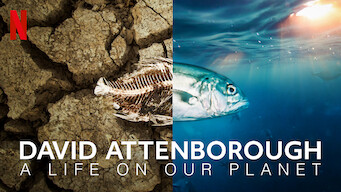Takeaway message from 'a life on our planet'
15-10-2020
David Attenborough’s “A Life on Our Planet”: Hope in the ruins
Most people will be familiar with the soothing voice of natural scientist David Attenborough, who has been publicly documenting the world of wildlife ever since air travel and television have made it possible to do so. Now ninety-three years old, Attenborough reflects on his wondrous life in his latest film, casting out an urgent and profound message: the natural world is dying, fast. We must act now to stop this. It is a matter of saving ourselves.
What makes this documentary so powerful is that it is, as Attenborough himself calls it, a “witness statement”. All of the dramatic changes he exposes through vivid film sequences have taken place in a single lifetime. Statistics about the environmental crisis can sometimes feel overwhelming and abstract, but A Life on Our Planet humanizes them through one person’s testimony.
Still, the scale of the problem is gargantuan. Not only is the damage extensive, it is accelerating. The film’s key message is that the natural environment which humans have depended on for as long as they have existed, has remained stable and thriving thanks to the workings of delicate natural cycles which themselves depend on the balance created by a rich biodiversity. This constitutes the very principle of sustainability: equilibrium, renewal. What we are seeing now, however, is that the damage accumulated over two centuries of intensified extraction and consumption of natural resources has been disrupting these cycles to such an extent that they are reaching ‘tipping points’, or “one-way doors,” says Attenborough. Past these points, global warming and biodiversity loss will only go faster.
Predictions for the future are terrifying. Reaching the film’s midpoint, Attenborough allows himself a moment of mourning. But thankfully, it doesn’t end there. To reverse destruction, there is one way to go, stresses Attenborough: “We must re-wild the world,” and restore the balance which has been disrupted. There is hope, he asserts, because we already know what needs to be put into place to achieve this goal.
These are his five solutions:
- Slow population growth. We can do this by making healthcare and education more accessible and by eradicating poverty.
- Shift to renewable energy and completely phase out fossil fuels.
- Regulate to protect wild spaces, because the richness of their biodiversity will spill over into the spaces that we do use.
- Reduce farmland to make room for more wilderness. The simplest way to do this is by changing our diets: plant-based diets require half of the land usage of carnivorous diets. Moreover, new farming techniques combining high and low-tech are making it possible to increase yields with less resources.
- Halt deforestation. Forests are our most important ally as they trap carbon from the atmosphere, and they host so much biodiversity.
In short, we must learn to live sustainably. By re-examining our relationship to nature, we can work towards restoration. The hope in the ruins of today’s world, is the birth of a new age of environmental consciousness.
At CO2logic, we are proud to stand by these objectives and to be doing our best to help achieve them.
Summary of key points:
- Over the course of his lifetime, David Attenborough has been the witness of the acceleration of the natural world’s destruction. Today, we have reached a critical point, putting us on course for an unlivable future.
- We must act now to change this – human survival depends on it.
- Yet, there is hope in the ruins: a number of solutions are at our fingertips. These include; rewilding the world, curbing population growth, and learning to live sustainably.
- In our lifetimes, we must commit to taking action towards restoring our natural environment.




